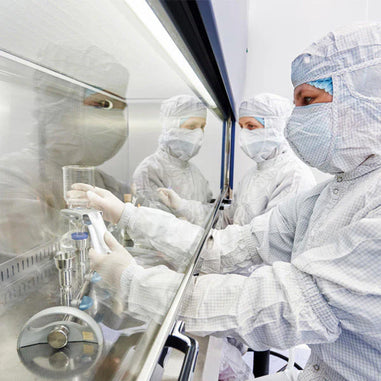- No products in the cart.
In order to streamline production, it’s imperative to assess your solar cell manufacturing process and identify areas of waste. Waste isn’t just products or chemicals but also includes wasted wastage of time, materials, movement, skills, and more. Identifying areas of waste will help your manufacturing process become more efficient, waste fewer materials, and save you money. In this post, we will highlight some aspects to focus on in your solar cell manufacturing process to make it more efficient and help your bottom line
1. Assess Energy Waste (carbon footprint)
As a member of the solar energy industry, you’re already dedicated to bringing clean energy to the public. However, it’s important to take a step back and look at your daily practices to ensure your manufacturing reflects this green energy commitment. Although the energy produced by solar panels is green, the energy used to make them often is not.
In China, many manufacturing facilities rely on coal, which has quite a large carbon footprint. This, in turn, means that the time it will for each solar panel to compensate is quite long, sometimes decades. In other areas like the US and Europe, where fossil fuels or nuclear energy power industries, the carbon footprint is reduced slightly from that of coal. However, solar panels still require many years of energy production before “‘paying back”’ their carbon usage.
You can reduce your energy consumption by looking for higher-efficiency equipment for your production facility and replace older, lower-efficiency models whenever applicable. In a perfect world, green energy will be used to produce more green energy. Unfortunately, due to financial and location constraints this is often not feasible. The solar cell manufacturing process requires a large amount of energy, so the use of green energy sources should be used whenever possible.
First, assess your energy use by calculating the periodical cost of non-renewable energy to power your facility. Next, determine how long it will take to pay off if you choose to invest in a green energy source (wind, water, solar, geothermal, etc.). Consider investing in green energy to power your own facility. Not only will these tips drastically reduce your carbon footprint, but it will also save you money in the long run.

2. Analyze Production Steps
Another source of waste in manufacturing comes not from the energy of machines, but of people. Every step in the solar cell manufacturing process should be optimized to eliminate unnecessary steps, movements, and re-work performed by your workers.
The first step of this is mapping out facility layout, product flow, and movement of workers. Doing so will give you a logic-based map of where movement is being wasted. Consider re-organizing your equipment placement wherever necessary to keep product flow going in one direction. When looking at workers’ movements, think critically about how many workers are needed in an area, what tools they will need, and where the they are located. Make adjustments to your work areas as needed.
Likewise, always make sure tools and equipment are working as they should, to prevent unnecessary re-work in the production line. Re-work costs you valuable production time and, therefore, money. In the manufacture of solar cells, tools like cutters and tweezers are crucial. You can make sure these tools are performing as required with regular maintenance and by purchasing high-quality tools from a reliable supplier.
3. Optimize & Enforce Quality Control Standards
Keep your standards for quality control high and check often to reduce defective solar cells and associated waste. High production volume doesn’t mean much if products get sent back or, worse, discarded. Producing defective solar cells means you’ve wasted energy of your facility, time of your employees, and the cost of materials. This should always be avoided. The best way to reduce this is with strict quality control standards.
First, identify the most important areas of your facility and set up a quality control check at the end of each. In solar cell manufacturing, this could mean regular checks after cutting, etching, diffusing, and coloring. Quality checks on individual solar cells can be done manually by workers (either by eye or with the help of a magnifier or microscope) or with computer software. Either way, this will ensure that problems are addressed as they arise, rather than at the final production steps.
4. Minimize Use & Production of Hazardous Materials
As discussed in our last post, the solar cell manufacturing process is associated with the generation of toxic byproducts and other environmental concerns. Finding alternative reagents, reducing usage, and recycling material whenever possible can help to alleviate these concerns. Whenever unavoidable, hazardous materials should be used with care – both to prevent waste generation and to protect workers.
The Right Tools for Your Solar Cell Manufacturing Process
Overall, every solar cell manufacturing facility has slightly different needs and goals. We hope This guide can help you streamline your production. No matter what your solar cell manufacturing process goals are, you can take the first step in the right direction by using high-quality tools and lab equipment from a reliable supplier.
__
For over 40 years, Lab Pro has been committed to delivering a complete laboratory solution by offering the highest quality products, cutters, tweezers, and microscopes to solar panel production laboratories worldwide. Come visit the biggest Lab Supply showroom in the Bay Area, or contact us online or at 888-452-2776.
References:



















































